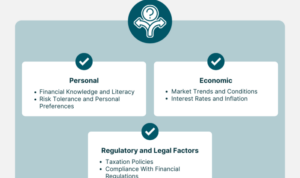Looking to secure your financial future? Starting to save is the key to setting yourself up for success. In this guide, we’ll take you through the essentials of saving money and how it can impact your life in significant ways. From understanding the importance of saving to maximizing your savings through investments, this comprehensive overview will equip you with the knowledge you need to kickstart your journey towards financial stability.
Understanding the Importance of Saving

Saving money is crucial for financial stability as it provides a safety net in times of emergencies and unexpected expenses. By building a savings habit, individuals can avoid falling into debt and have the financial freedom to pursue their goals.
Benefits of Starting a Savings Habit Early
- Compound Interest: Starting to save early allows your money to grow over time through compound interest, increasing your wealth significantly.
- Financial Independence: Saving early helps in achieving financial independence and allows you to make choices based on your goals, rather than financial constraints.
- Emergency Fund: Having savings set aside can help you deal with unexpected expenses without relying on credit cards or loans.
Examples of Achieving Financial Goals through Saving
- Buying a House: Saving for a down payment on a house can make homeownership more accessible and reduce the amount borrowed, leading to lower interest costs.
- Retirement Savings: Starting to save for retirement early ensures a comfortable retirement with enough funds to maintain your lifestyle.
- Travel and Experiences: Saving money allows you to travel, explore new places, and create memorable experiences without worrying about financial constraints.
Setting Financial Goals
Setting financial goals is crucial for effective saving and managing your money wisely. By establishing both short-term and long-term financial goals, you can create a roadmap to financial success and ensure that you are working towards a secure financial future.
Short-Term Financial Goals
Short-term financial goals typically cover a period of one year or less. These goals are essential for managing immediate expenses and building a strong foundation for your financial well-being. Some tips for setting short-term financial goals include:
- Creating an emergency fund to cover unexpected expenses like car repairs or medical bills.
- Setting specific savings targets for short-term goals such as a vacation or a new electronic gadget.
- Tracking your expenses to identify areas where you can cut back and save more effectively.
Long-Term Financial Goals
Long-term financial goals involve planning for major life events or milestones that are several years in the future. These goals require careful consideration and consistent saving over time. Here are some tips for setting long-term financial goals:
- Saving for retirement by contributing to a 401(k) or IRA account regularly.
- Setting a goal to purchase a home or start a family within a specific timeframe.
- Investing in education or further career development to increase your earning potential in the long run.
Prioritizing Financial Goals
It’s essential to prioritize your financial goals to ensure that you allocate your resources effectively and make progress towards achieving them. Consider the following tips for prioritizing your financial goals:
- Rank your goals based on urgency and importance, focusing on those that require immediate attention.
- Consider the long-term impact of each goal and prioritize those that will have the most significant positive effect on your financial well-being.
- Adjust your priorities as needed based on changes in your financial situation or life circumstances.
Creating a Budget
Creating a budget is a fundamental step in aligning your spending habits with your saving goals. A budget helps you track your income and expenses, identify areas where you can save money, and stay on track towards achieving your financial goals. Remember to:
- Set clear spending limits for different categories such as housing, transportation, and entertainment.
- Monitor your budget regularly and make adjustments as needed to ensure you are staying within your financial limits.
- Allocate a portion of your income towards savings and investments to build wealth over time.
Creating a Savings Plan
To effectively save money, it’s crucial to have a solid plan in place. By tracking expenses, following a budgeting rule, and automating savings contributions, you can set yourself up for financial success.
Tracking Expenses and Identifying Saving Opportunities
- Start by keeping a detailed record of all your expenses, from bills to everyday purchases.
- Use apps or spreadsheets to categorize your spending and identify areas where you can cut back.
- Look for recurring expenses that might be unnecessary or can be reduced to save more.
The 50/30/20 Rule for Budgeting and Saving
- The 50/30/20 rule suggests allocating 50% of your income to needs, 30% to wants, and 20% to savings.
- By following this guideline, you can ensure that you prioritize saving a significant portion of your income.
- Adjust the percentages based on your financial goals and lifestyle, but aim to save at least 20% consistently.
Strategies for Automating Savings Contributions
- Set up automatic transfers from your checking account to your savings account on a regular basis.
- Utilize direct deposit options from your employer to allocate a portion of your paycheck directly to savings.
- Consider automatic investment options, such as employer-sponsored retirement plans, to save without thinking about it.
Building an Emergency Fund
Building an emergency fund is crucial for financial stability and preparedness. It serves as a safety net during unexpected situations like job loss, medical emergencies, or major car repairs.
Calculating the Ideal Amount
- Financial experts often recommend saving three to six months’ worth of living expenses in an emergency fund.
- To calculate your ideal amount, consider your monthly expenses, including rent, utilities, food, transportation, and other necessities.
- Factor in any debts or other financial obligations to determine a realistic savings goal.
Storing Your Emergency Fund
- Keep your emergency fund in a separate savings account to prevent the temptation of dipping into it for non-emergencies.
- Look for accounts with high-interest rates to help your fund grow over time.
- Consider using a liquid account that allows easy access to funds when needed, such as a money market account or a high-yield savings account.
Maximizing Savings through Investments
Investing is a key way to grow your savings over time. By putting your money into various investment options, you have the potential to earn returns that are higher than traditional savings accounts.
When it comes to investments, there are two main categories to consider: low-risk and high-risk opportunities. Low-risk investments, such as certificates of deposit (CDs) and bonds, offer more security but lower potential returns. On the other hand, high-risk investments like stocks and mutual funds have the potential for higher returns but also come with greater volatility and risk of loss.
Low-Risk vs. High-Risk Investments
- Low-risk investments provide more security but lower returns.
- High-risk investments offer the potential for higher returns but come with greater risk.
Diversifying Investments for Long-Term Growth
Diversification is a key strategy to minimize risk and maximize returns. By spreading your investments across different asset classes, industries, and geographic regions, you can reduce the impact of market fluctuations on your overall portfolio.
Don’t put all your eggs in one basket. Diversifying your investments helps spread risk and increase the potential for long-term growth.






